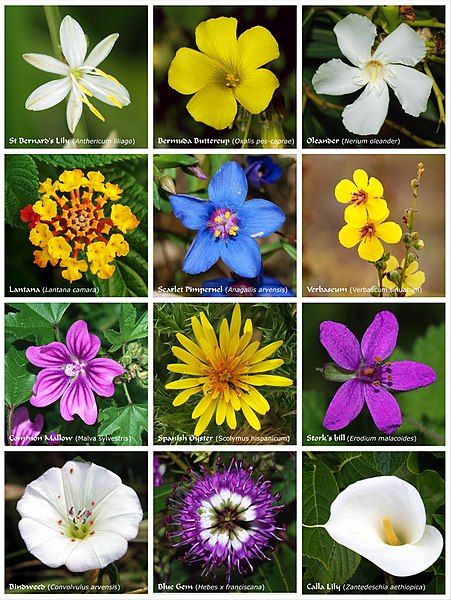Flower
 A flower, sometimes known as a bloom or blossom, is the reproductive structure found in flowering plants (plants of the division Magnoliophyta, also called angiosperms). The biological function of a flower is to effect reproduction, usually by providing a mechanism for the union of sperm with eggs. Flowers may facilitate outcrossing (fusion of sperm and eggs from different individuals in a population) or allow selfing (fusion of sperm and egg from the same flower). Some flowers produce diaspores without fertilization (parthenocarpy). Flowers contain sporangia and are the site where gametophytes develop. Flowers give rise to fruit and seeds. Many flowers have evolved to be attractive to animals, so as to cause them to be vectors for the transfer of pollen.
A flower, sometimes known as a bloom or blossom, is the reproductive structure found in flowering plants (plants of the division Magnoliophyta, also called angiosperms). The biological function of a flower is to effect reproduction, usually by providing a mechanism for the union of sperm with eggs. Flowers may facilitate outcrossing (fusion of sperm and eggs from different individuals in a population) or allow selfing (fusion of sperm and egg from the same flower). Some flowers produce diaspores without fertilization (parthenocarpy). Flowers contain sporangia and are the site where gametophytes develop. Flowers give rise to fruit and seeds. Many flowers have evolved to be attractive to animals, so as to cause them to be vectors for the transfer of pollen.
In addition to facilitating the reproduction of flowering plants, flowers have long been admired and used by humans to beautify their environment, and also as objects of romance, ritual, religion, medicine and as a source of food.
Parts of a Flower
The pistil is the collective term for the carpel(s). Each carpel includes an ovary (where the ovules are produced; ovules are the female reproductive cells, the eggs), a style (a tube on top of the ovary), and astigma (which receives the pollen during fertilization).
The Male Reproductive Organs:
Stamens are the male reproductive parts of flowers. A stamen consists of an anther (which produces pollen) and a filament. The pollen consists of the male reproductive cells; they fertilize ovules.
Fertilization:
Pollen must fertilize an ovule to produce a viable seed. This process is called pollination, and is often aided by animals like bees, which fly from flower to flower collecting sweet nectar. As they visit flowers, they spread pollen around, depositing it on some stigmas. After a male's pollen grains have landed on the stigma during fertilization, pollen tubes develop within the style, burrowing down to the ovary, where the sperm fertilizes an ovum (an egg cell), in the ovule. After fertilization, the ovule develops into a seed in the ovary.
Some flowers (called perfect flowers) have both male and female reproductive organs; some flowers (called imperfect flowers) have only male reproductive organs or only female reproductive organs. Some plants have both male and female flowers, while other have males on one plant and females on another. Complete flowers have stamens, a pistil, petals, and sepals. Incomplete flowers lack one of these parts.
No comments:
Post a Comment